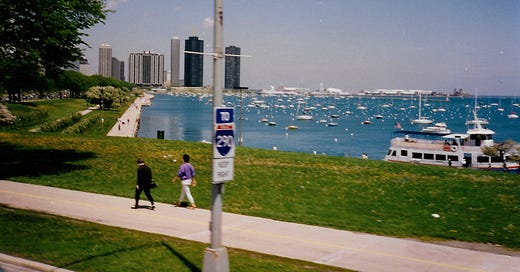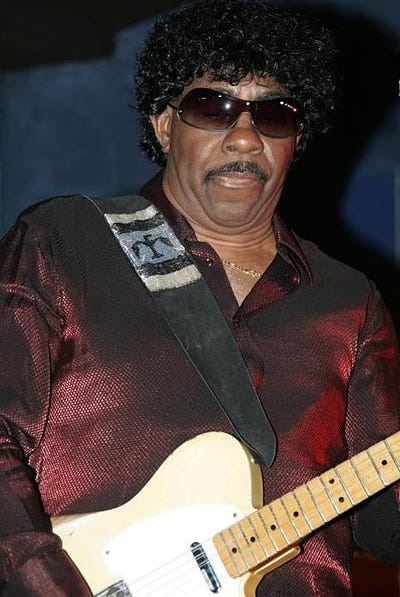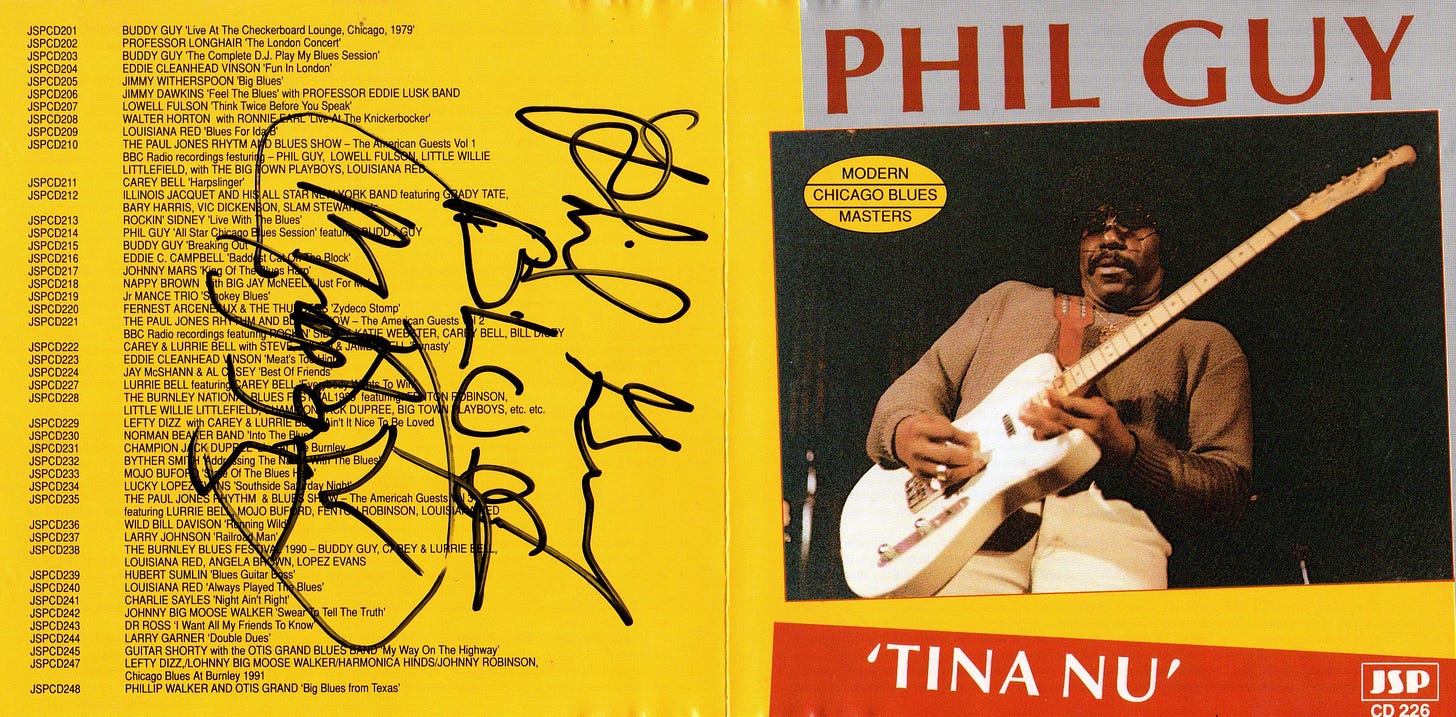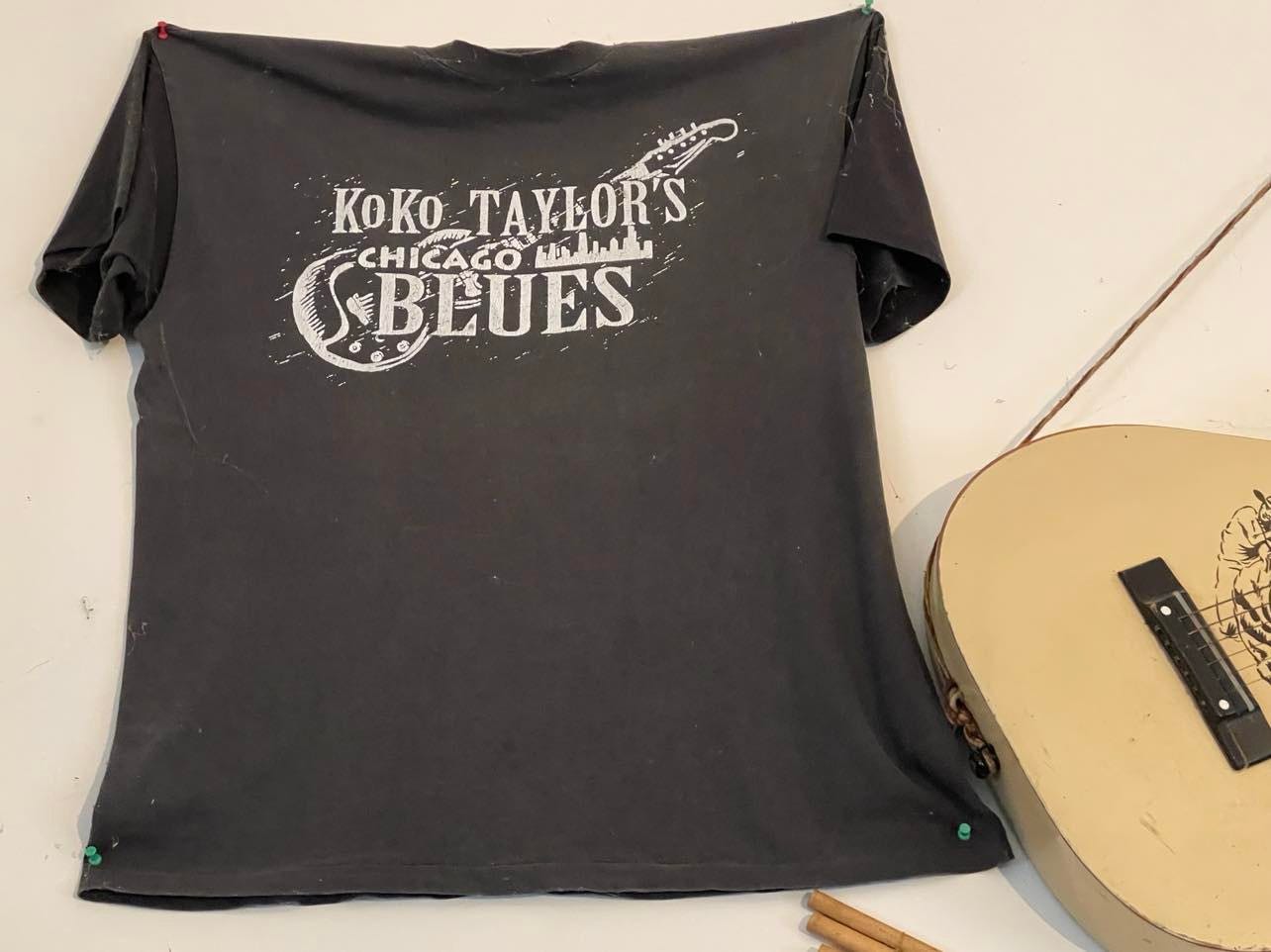It was fall, 1995 and I was back in Chicago, finding myself much more streetwise than I had been on my first visits. I travelled by taxi rather than walking alone downtown in the early hours of the morning. If it wasn’t because I was streetwise, it was because the wind from Lake Michigan was bitterly cold, even when the sun was shining. Living in Auckland, I don’t own winter clothing.
I arrived at W. Division St at around 7 pm with my colleague Jeff, my Aussie offsider. The first thing I noticed as I headed to Koko Taylor’s Blues club was the cops. They were armed of course, as are all cops in the US, unlike Kiwi cops who have them locked in their vehicles. What stood out was that they looked pretty sharp and they were friendly, well to me anyway. There was a focus in 1995 to make the nightclub area safe. They told me that if I was to leave the general area of the clubs there, only to do so by taxi.
To put it in perspective. In 1995 there were 995 ‘slayings’, in Chicago. In the whole of New Zealand that year, there were 98. We arrived at the club, paid the entry fee, which was around $10, and found ourselves a table near the stage of one of the two bars.
The band was setting up and it was time for an MGD. Jeff had spent time in Canada and convinced me that Miller’s was better than a Bud.
As the club filled up (it was super early for any club, but I wanted to make the most of it) we got a table close to the stage. The leader of the band was Phil Guy. I hadn’t heard of him, but I loved the music.
They started off easy and warmed up as the room filled. There was a mix of locals, and out-of-towners, many hopping from club to club during the night. We were the only non-Americans in the house.
After a few beers, nature called and I walked past the stage where Guy and the Sound Machine were still performing, thinking I’d get in before the crowd.
Opening the door into the bathroom, which was fairly small, I found a hubbub of people, either waiting or talking to the sharp-looking elderly man, wearing a flash pin-stripe suit, standing by a shelf full of perfumes and colognes. I watched and waited for a cubicle to come free.
Most people seemed to know him and there were constant flashy handshakes and jokes, as he matched people with his perfumes, or made recommendations. He knew the locals by name and they were all very friendly and respectful to him.
I had a chat with him while he came up with a recommendation for me. This was his business, he told me. It took a long time for him to be able to afford the ‘real’ perfumes, “no cheap imitations here”, and life was good, in his little room with no windows and lots of people.
Sadly the club would close the following year. I hope he found another club with equally generous clientele. It’s sad. Apparently the locals weren’t prepared to pay the cover charge. For people like me, going to Chicago, one of the homes of the blues, was a bucket list line item, even if I filled that bucket a number of times. For the locals, it was just a night out in the city and the entry charge was probably the equivalent of two drinks.
After the second set, they stopped for food and started mingling around the tables. We were having buffalo wings and invited Phil to join us. He sat down and chatted with us. This is when I said my famous line, both metaphorical and serious. I said, “Phil, I’ve come a long way to be here.”
He replied, “So have I brother… So have I.”
Phil had a pile of CDs for sale and I bought 3. He signed two of them for me.
I have treasured those and they are well played. My favourite tracks are Professor’s Boogie, which is above. I used to love to jam to that track. The second favourite is his version of Steppin’ Out which is on this album. I used to belt that out when nobody was listening.
Garbage Man was recorded in a club in London, where he was playing with local musicians. It gives you a bit of an idea of his style, only 4 years after I saw him.
But this video, with photos, rather than a live video better shows his pedigree.
I have enjoyed some great music in Chicago, but even as a real blues fan, I have to admit that I did not twig about who Phil was, until I was back home, emptying my bright yellow Samsonite suitcase and read the liner on one of the CD covers.
Phil is of course the younger brother of the more famous Buddy Guy. They played extensively together with blues harp giant, Junior Wells in the 1970s. He played with the biggest names in the business and was still playing up until his sad death of prostate cancer in 2008, at the age of 68.
I’m glad I didn’t realise who I was talking to when I met him, because I would have been star-struck and probably lost for words. I wouldn’t have been able to have a casual conversation with him in between sets. In my mind, he was part of blues royalty.
I have my CDs, and a t-shirt hanging on the wall in my music room, to remember the club and fond memories of Chicago. I doubt I will ever go there again. But my memories are forever.
#philguy #chicago #chicagoblues #bluesmusic #kokotaylor #bluesclubs
Fan of the blues? I have more memories to share. You might want to subscribe and have a read and a listen. Who are your favourite blues artists?







That's a really cool story!